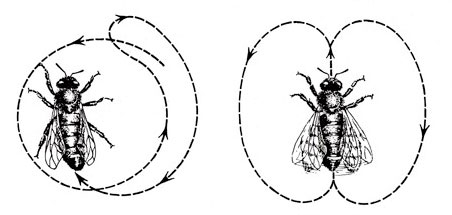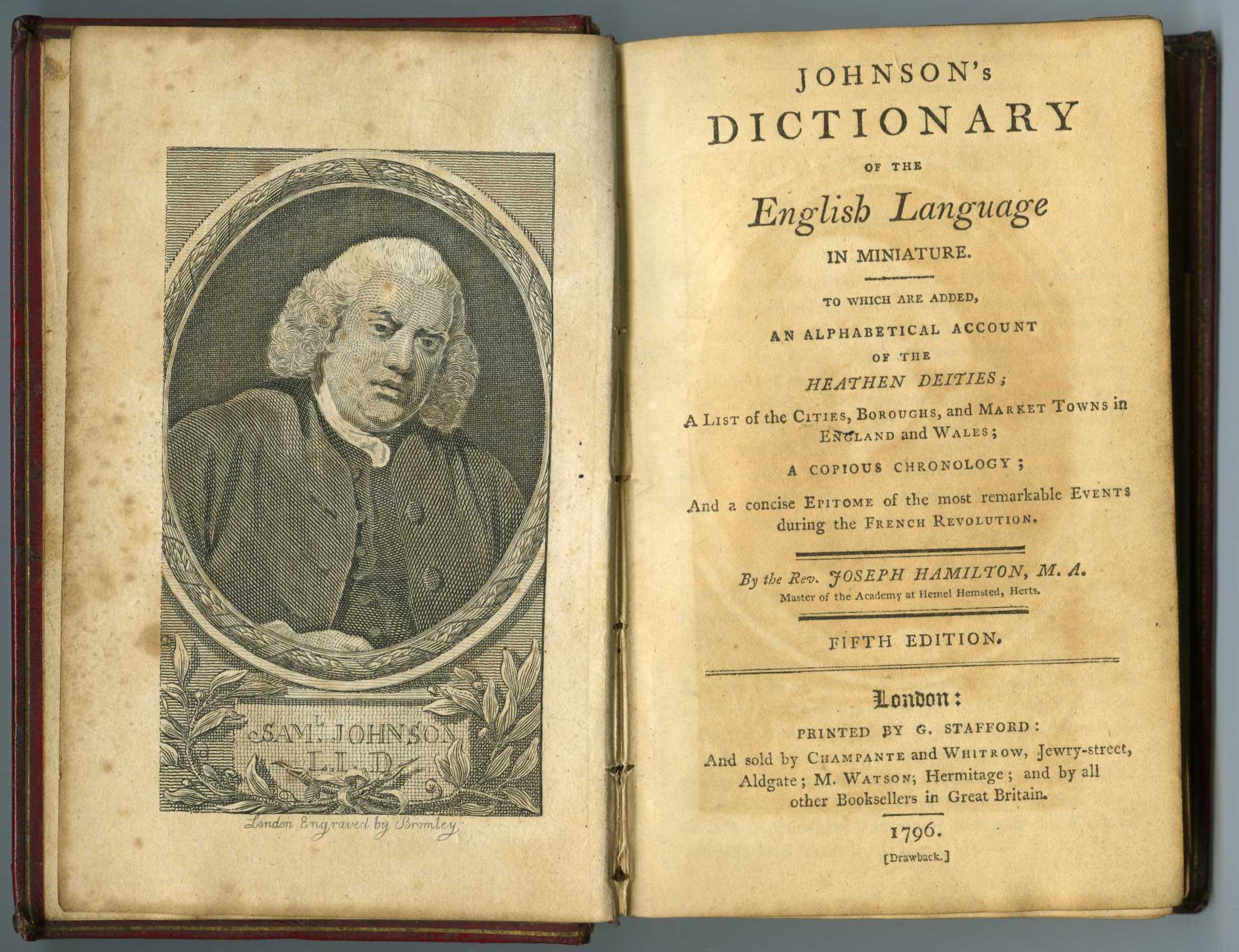It is clear that the term *language* has a technical meaning but that it is also used to refer to what humans — but also some other species, e.g. monkeys, — do when they “chatter”! In the first sense, language is a form of communication viewed as acts during which specific messages are passed from one individual to others.
 An example often cited in the past was to the “language” of bees, a field of research associated with the work of Karl von Frisch (Nobel prize, 1973) and his discovery that bees inform members of their hive of the location of honey sources by a dance. Here an individual message has content, that is, it is about something, refers to some distinguishable happening or event which may be significant or important to communicants. Yet every message may only be a constituent of a wider language. A piercing cry may be a message — as may be a whimper — but it is not part of a language unless there are additional messages which supplement such singular cries.
An example often cited in the past was to the “language” of bees, a field of research associated with the work of Karl von Frisch (Nobel prize, 1973) and his discovery that bees inform members of their hive of the location of honey sources by a dance. Here an individual message has content, that is, it is about something, refers to some distinguishable happening or event which may be significant or important to communicants. Yet every message may only be a constituent of a wider language. A piercing cry may be a message — as may be a whimper — but it is not part of a language unless there are additional messages which supplement such singular cries.
A language, in short, usually features many messages and — as we have learnt over the past few hundred years following the publication of several dictionaries — each human language shows that it can grow by leaps and bounds within a relatively short period. In short, a cry can become part of a vocal language, but may not do so consistently. There may be many “cries” which can become an aspect or feature of a language, but need not do so. (For example, “ouch” is a cry of pain, but it is in English.)
A human language has many features by means of which messages are passed from one individual to others of a group, from one to one or among many. Each message has some content — what it is about — but it also possesses a formal structure, which becomes part of its referential meaning. It is therefore incorrect to advertise only the semantic aspect of a term, since each message also occurs in a context which contributes to some degree to what is normally referred to as its meaning for both the sender and the recipient of the message. The prototypical and well-known example of how structure determines meaning is “the cat is on the mat” versus “the mat is on the cat”. There are many versions of this.
As already stated, language is a form of communication viewed as acts of passing messages from one individual to others of a group. But messages by humans are communicated not only by spoken words, but also by gestures, hand signals, etc. Indeed, many modern commentators refer to “body language” to convey that there may be additional meaning to a statement made in written or some other form, e.g., when a poet reads his work in public. Thus one may hear a comment that, “Mr. T asserts ‘xyz’ but his body language tells a different story.” It gives us a different story than if only his words were used to interpret his meaning.
Let us now clarify two terms which may make my position clearer, namely descriptive sentences and evaluative sentences.
Descriptive sentences refer to those elements of a spoken or written language which are presented in the form of statements whose function is to assert that some particular event, x, has a general quality, q. For example, “the sky today is blue” describes x by ascribing one of many possible, suitable, likely attributes to x. Important: the letter q does not refer to an evaluative property of the event (like “beautiful”, “desirable”, “ghastly”, “horrendous”) but refers to a feature which in combination with other features makes the event unique or different from other events, including what it is made of, e.g. a horse of flesh and bones, or a horse made of wood!
Evaluative sentences, on the other hand, refer to sentences of a language which ascribe value to an event, which order or locate that event on a scale of desirability, preferability, usefulness, etc. These are all qualities of the object which reflect its value but does not add to its description. Such evaluations are invariably relative to some other, perhaps comparable, items or events. These therefore do not describe the object by reference to its so-called “defining” properties. To refer to a vase as “in the shape of a bottle with ugly decorations” is a mixed description — and in that sense is no more helpful than talking about it as being “shaped as a bottle with additional decorations”! By adding that the decorations are “ugly”, the object is classified as existing on a scale of values which reflect something about the speaker and not the the object! It is similar to asserting “I love dogs but not cats”, which states a personal preference and clearly has nothing to do with either dogs or cats: in short, being liked by me is not descriptive of either entity or object!
We therefore divide our world into (a) items, events, situation which are describable, can be described, in contrast to (b) rating each of these on a scale which reflects our personal appreciation and reaction to it. We customarily talk about (a) as involving objective description and (b) as involving our personal, subjective, reaction to some event.
In some sense, therefore, descriptive statements may be true or false, whereas evaluative statements only reflect the views and opinions of the speaker, namely, his or her preferences and opinions. To refer to them as being true or false violates the rules of language use. The statements themselves have no epistemic validity, since this quality of a statement cannot be tested without reference to “data”.

 It pays to look at what modern dictionaries say about words which are in common and in wide use. Once again I looked up *fact* in the reputable Merriman-Webster Dictionary (on-line edition) and found the following entry:
It pays to look at what modern dictionaries say about words which are in common and in wide use. Once again I looked up *fact* in the reputable Merriman-Webster Dictionary (on-line edition) and found the following entry: We are, in fact, demonstrably more adept at describing the outside world — our common world. Some say that this is so because we live in a materialistic culture which is primarily focussed on the world around us. (Thus culture plays a “shaping” role).
We are, in fact, demonstrably more adept at describing the outside world — our common world. Some say that this is so because we live in a materialistic culture which is primarily focussed on the world around us. (Thus culture plays a “shaping” role). We propose to call all newly defined words in a language as cases of *neolidesm*, a word constructed from neo (new) and idein, whose root according to the Oxford Dictionary, is the Greek ἰδέα, or ἰδεῖν or idein, translated as “to see”. The etymology of the new word is not important in itself: it could be borrowed from another language or created from bits and pieces of the home-language too. However, the new word stands in contrast to a *neologism*, a word which refers to the special case where the word’s origin is independent of its newness as an idea, but where its novelty as a word is of interest to us That is, the word is unquestionably new in the language, but not necessarily the idea to which the word is said to refer. It also could be purely manufactured as is Mary Poppin’s almost unpronounceable creation *supercalifragilisticexpialidocious*. To the best of my knowledge this word has no meaning yet! The term *Jabberwocky*, however, is another matter. We are told that it is the name of a creature which is vaguely described, but not defined by Lewis Carroll in “Through the Looking-Glass and What Alice Found There”, (1872) in the following lines:
We propose to call all newly defined words in a language as cases of *neolidesm*, a word constructed from neo (new) and idein, whose root according to the Oxford Dictionary, is the Greek ἰδέα, or ἰδεῖν or idein, translated as “to see”. The etymology of the new word is not important in itself: it could be borrowed from another language or created from bits and pieces of the home-language too. However, the new word stands in contrast to a *neologism*, a word which refers to the special case where the word’s origin is independent of its newness as an idea, but where its novelty as a word is of interest to us That is, the word is unquestionably new in the language, but not necessarily the idea to which the word is said to refer. It also could be purely manufactured as is Mary Poppin’s almost unpronounceable creation *supercalifragilisticexpialidocious*. To the best of my knowledge this word has no meaning yet! The term *Jabberwocky*, however, is another matter. We are told that it is the name of a creature which is vaguely described, but not defined by Lewis Carroll in “Through the Looking-Glass and What Alice Found There”, (1872) in the following lines:
 Modern American English is full of such “home grown” words and phrases. The word *rap* for example has several meanings including the act of talking or discussing, freely, openly, or volubly (as suggested in Wikipedia). The word is also articulated in the same manner as the one spelled *wrap*, which means “to bundle up”. It is also related to the idea of establishing rapport, that is, refers to developing a sense of fellowship among speakers and members of a group. These group members will then determine which of several meanings also apply! It is a case where the meaning of a term will be strongly influenced by its context, not only by its dictionary definition(s). In short, the meaning of a word is usually — perhaps, most often — multi-determined. Conclusion: to search for a unique meaning of a word is, generally speaking, foolhardy.
Modern American English is full of such “home grown” words and phrases. The word *rap* for example has several meanings including the act of talking or discussing, freely, openly, or volubly (as suggested in Wikipedia). The word is also articulated in the same manner as the one spelled *wrap*, which means “to bundle up”. It is also related to the idea of establishing rapport, that is, refers to developing a sense of fellowship among speakers and members of a group. These group members will then determine which of several meanings also apply! It is a case where the meaning of a term will be strongly influenced by its context, not only by its dictionary definition(s). In short, the meaning of a word is usually — perhaps, most often — multi-determined. Conclusion: to search for a unique meaning of a word is, generally speaking, foolhardy.
 Clearly whenever a language hosts or imports words and phrases, that language grows, regardless of whether its new terms are derived from a foreign language or whether these are “home made”, that is, are invented by its current speakers! Modern American English is full of such “home-grown” words and phrases. The word *rap* for example has several meanings including the act of talking or discussing, freely, openly, or volubly (as suggested in Wikipedia). It is also related to the idea of establishing rapport, that is, developing a sense of fellowship among speakers and members of a group. These group members will then determine which of several meanings also apply! It is a case where the meaning of a term will be strongly influenced by its context, not only by its dictionary definition(s). In short, the meaning of a word is usually — perhaps, most often — multi-determined. Thus, to search for a unique meaning is generally speaking, foolhardy.
Clearly whenever a language hosts or imports words and phrases, that language grows, regardless of whether its new terms are derived from a foreign language or whether these are “home made”, that is, are invented by its current speakers! Modern American English is full of such “home-grown” words and phrases. The word *rap* for example has several meanings including the act of talking or discussing, freely, openly, or volubly (as suggested in Wikipedia). It is also related to the idea of establishing rapport, that is, developing a sense of fellowship among speakers and members of a group. These group members will then determine which of several meanings also apply! It is a case where the meaning of a term will be strongly influenced by its context, not only by its dictionary definition(s). In short, the meaning of a word is usually — perhaps, most often — multi-determined. Thus, to search for a unique meaning is generally speaking, foolhardy. The terms “light” and “dark”, or “hot” and “cold” refer to relative contrasts; whereas “dead” and “alive” refer to opposite and exclusive contrasts of states, or conditions. We also contrast between events by using the adjectival form of a noun, as when we refer to a piece of bread — unquestionably an object — as “stone-hard” or perhaps as “doughy”. In short, nouns are often adapted to serve as adjectives, as qualifiers.
The terms “light” and “dark”, or “hot” and “cold” refer to relative contrasts; whereas “dead” and “alive” refer to opposite and exclusive contrasts of states, or conditions. We also contrast between events by using the adjectival form of a noun, as when we refer to a piece of bread — unquestionably an object — as “stone-hard” or perhaps as “doughy”. In short, nouns are often adapted to serve as adjectives, as qualifiers.